At some point in every movement teacher’s career, there comes a time when they fall in love with the psoas (pronounced “so-as” or “so-us”) muscle. Beyond being one of the most important structural stabilizers running from the upper body to the lower body, its state impacts our posture and respiration, and can be a limiting factor in more functional movements and yoga poses than we ever realized. So let’s learn a little bit about what it does, why it matters, and how we can develop a happy, healthy relationship with this magnificent muscle!
Where Is It, and What Does It Do?
The psoas starts at the lower back and attaches to the lumbar vertebrae and disks. This thick band of tissue runs deep along the front of the pelvis and attaches to a little boney outcropping on the upper, medial (inside) part of your femur bone. Because this muscle essentially attaches your torso to your legs, when the muscle engages it brings the legs towards the torso in a movement called “hip flexion.” Because of its position on the underside of your upper leg bone, it also assists with external rotation of the hip.
Why Does It Matter?
Most of us spend a good portion of our days and nights sitting down. In fact, I’m sitting right now as I write this article. It’s a common reality in our modern, mechanical environment that’s hard to avoid! Unfortunately, when we sit, the psoas isn’t working to hold the position. It’s simply sitting still in a shortened, inactive state. So, over time, the psoas gets used to that shortened position and also becomes weak. So we have a short, weak muscle that essentially connects the upper half of the body with the lower half of the body.
When the psoas is too short, standing up straight can drag the lower lumbar spine inward and create what is called an “anterior pelvic tilt,” meaning your butt sticks out and the vertebrae of your lower back are pulled forward. Because the psoas is a muscle of hip flexion, which is essentially picking up the leg so we can move forward or climb something, we end up needing this muscle for a lot of basic things in life: walking, running, climbing, hiking, etc. While some of these activities, done regularly, can help you maintain the ideal length of your psoas, many people sit for long hours and then jump right into high intensity activities to “work off their day.” Low back pain is often a complex and multi-layered challenge for many people, and engaging in high-impact exercise with a tight psoas asks your low back to absorb extra shock when it’s already in a compromised position… perhaps not the best idea.
In addition to straining the low back, a tight psoas can push the diaphragm forward, impacting the breath quality, and sends a message to your nervous system that the spine itself is out of balance. Beyond that, the ability to move the hip forward, back, and into external rotation is also compromised.
Why Does It Matter in Yoga?
In yoga, we prize backbends as some of the most challenging / sophisticated forms of asana. If our psoas is already pulling the lower back into the body, when we try to take on a deep backbend, many bodies will “hinge” right at that same area instead of working to distribute the pose throughout the whole spine into more of an “arc.” Maybe not a big deal once or twice, but how often do you flow quickly through Up Dog in a vinyasa class without thinking much about it? In addition, poses like Warrior 2 and a wide range of squats (horse, malasana) require strength in external rotation to stabilize the knee joint, a weak psoas could compromise safe knee alignment. So if you want to think of the value of working on your psoas in yoga – think about almost every backbend, every move that brings the legs and torso towards one another, and every externally rotated lunge. Are you convinced? Good.
This series is designed to help you tune up your psoas so that this very important muscle is both stable and mobile in all the ways we want it to be for our regular yoga and movement practice.
STRENGTHEN / STRETCH / ROLL THE PSOAS
Strengthen: Knee Presses
Lie on your back, flex your hip and bend your knee 90 degrees so your shin is parallel to the floor. Put one or both hands on your thigh. Push your thigh into your hand and push your hand into your thigh. Hold for 30 seconds & then do the other side for 30 seconds.
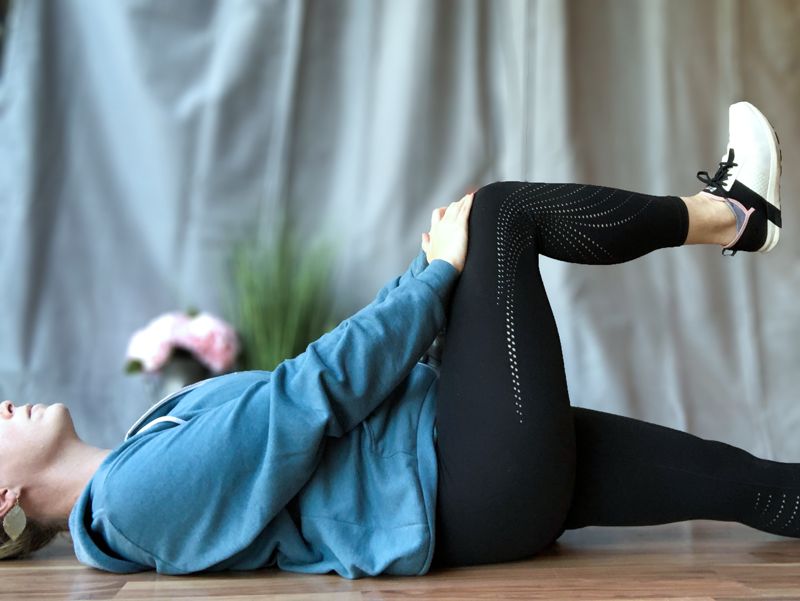
Strengthen: Psoas Spirals
This is one of my favorites from the brilliant mind of Jill Miller. Lie on your back with one leg straight up to the sky and the other leg on the ground. Imagine your the big toe of the top leg has a marker on it. Draw a spiral starting small & get slowly bigger. Take 30 seconds to get to the biggest range you can create, then spiral back in for 30 seconds – switch legs.

Stretch: Apanasana on a Block
This feels amazing after Psoas Spirals. With a block under your hips hug one knee into chest and let the other leg extend long on the mat. If you don’t feel much, take the block up a level. Try to point the toes and knee of the extended leg to the sky. Stay for 5-10 slow deep belly breaths.

Stretch: Low Lunge
From a forward fold step one leg back and put the back knee down onto the floor or a padded surface. You are stretching the psoas of the leg that is knee-down. The farther behind you the knee is, the more your low back will want to cave forward. Engage belly muscles and stay in a range where you don’t collapse the belly forward. Use your hands if it helps keep a level pelvis.

Roll / Release: Squishy Ball
Place the ball on the front of the pelvis. This can be intense so try just breathing here first. All of these techniques can easily be done on the wall as well. The psoas is in the space between your belly button and your hip bone (on either side). You can rock your hip bones side to side as though the ball was the fulcrum of a seesaw, or drag the ball from the edge of your hip to the middle to try to impact the muscle. Play around on your belly for 1-2 minutes.

Release: Blanket Burrito
In classes where I don’t have balls available, I’ll often offer a “blanket burrito.” Don’t hesitate to reduce your roll size if it feels too intense. You can test the blanket burrito on your belly button, a little higher, a little lower and try taking mild, passive cobra like stances with the upper body. The psoas will stretch lightly but your low back won’t be able to cave in because of the prop. Hold for 1-2 minutes.
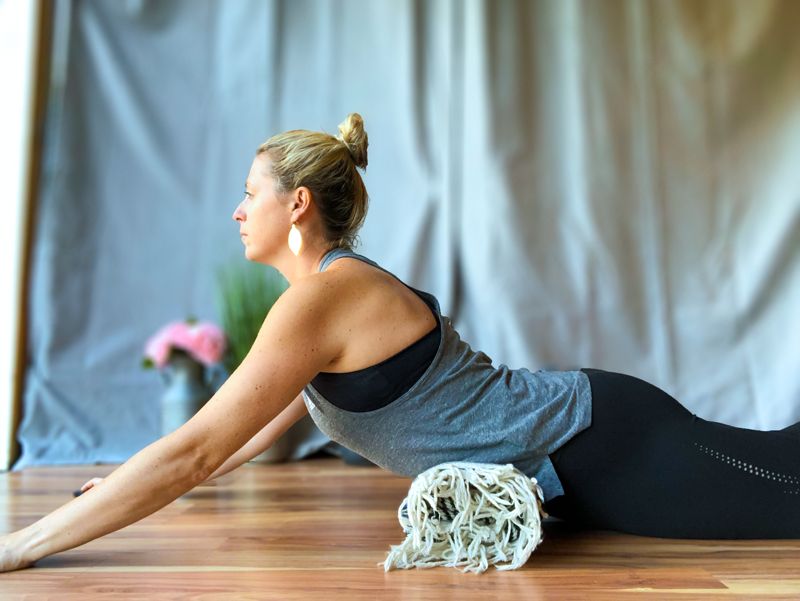

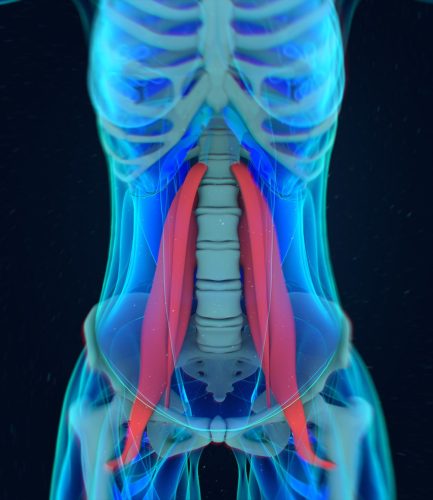







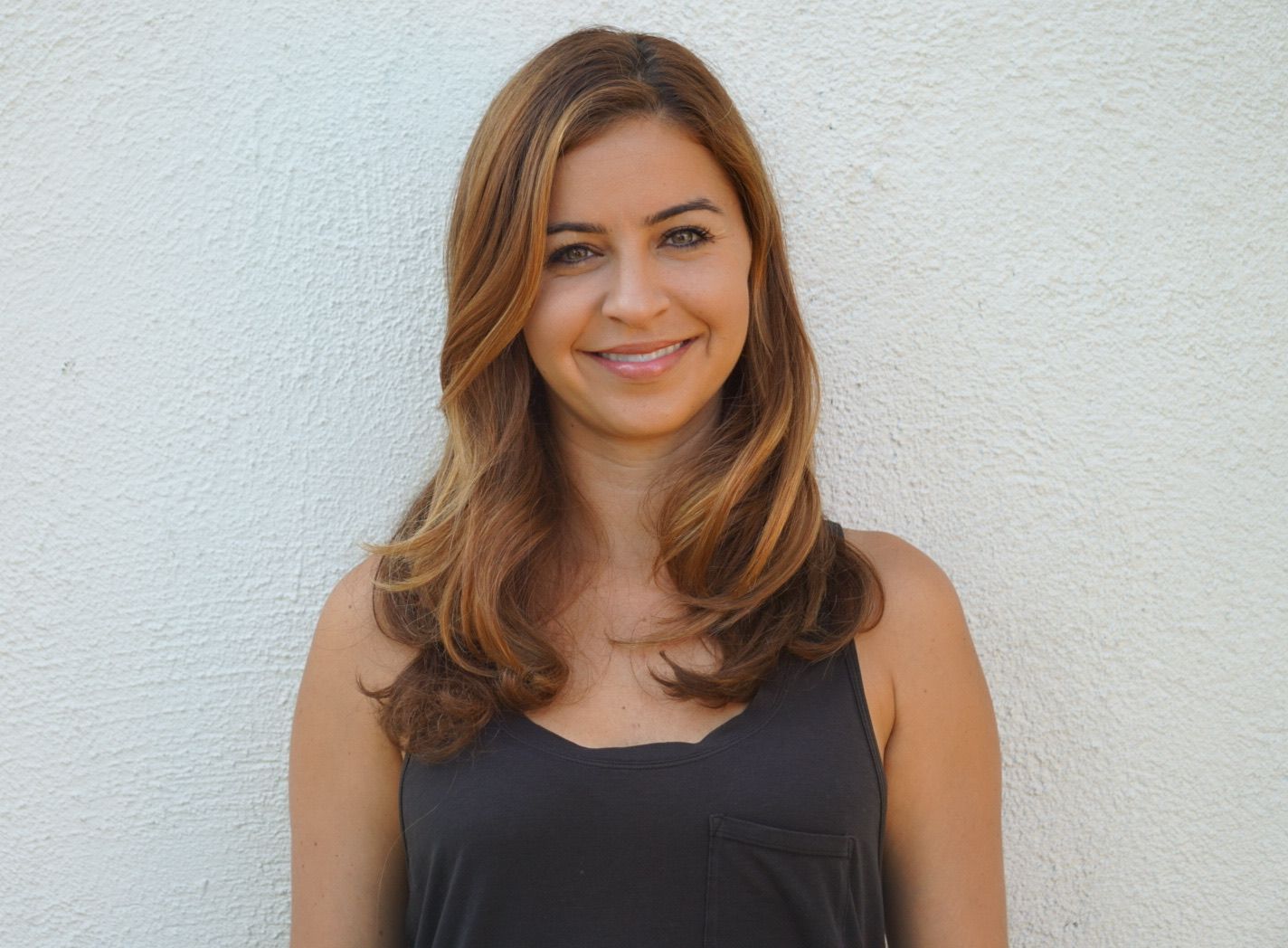


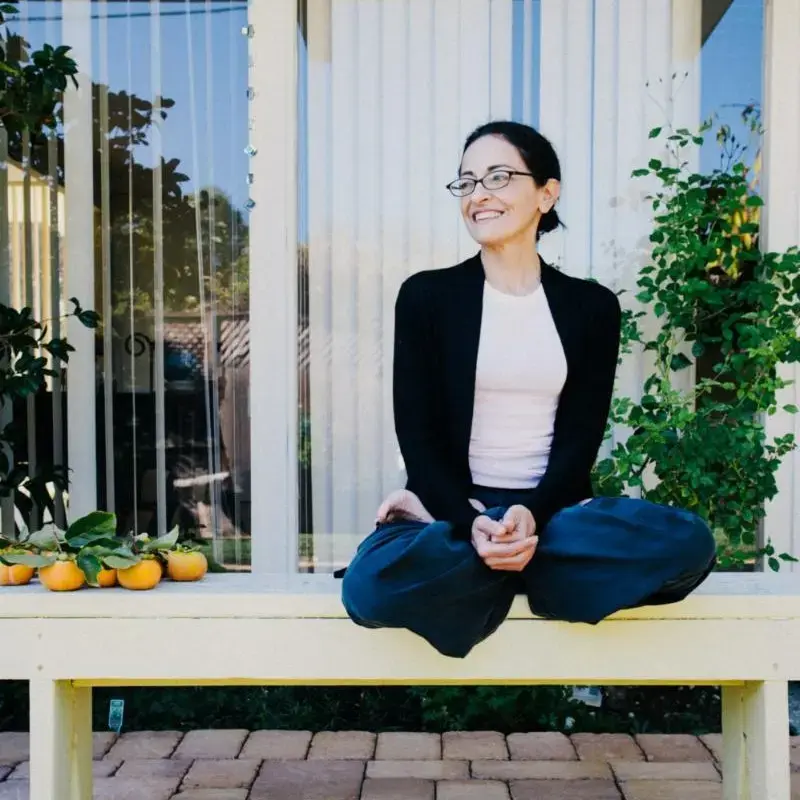




One reply on “The Muscle That Could Be Sabotaging Your Breath and Low Back”
Thank you Alyssa. Will definitely incorporate these moves whenever I can.